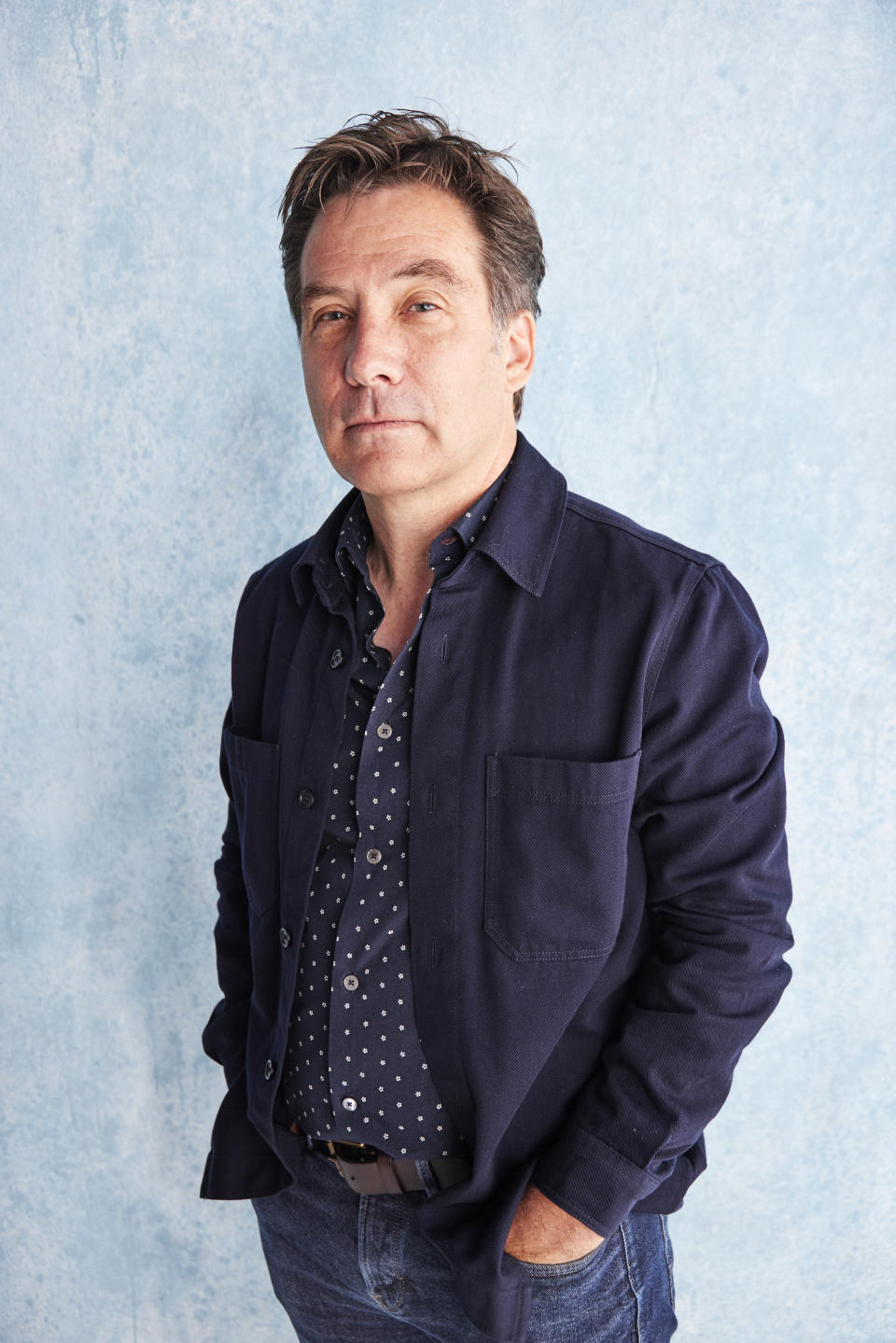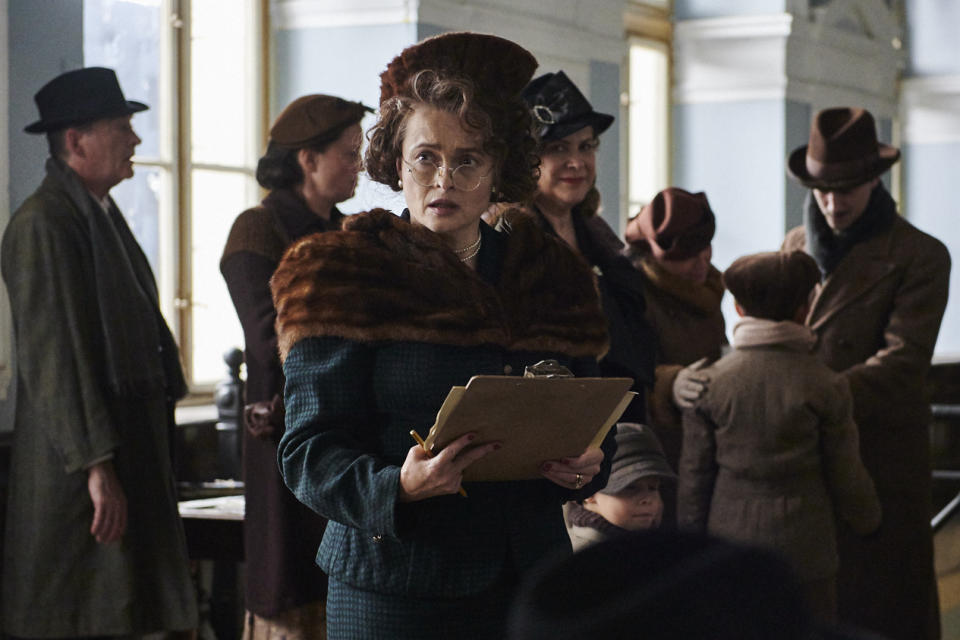Breaking Baz At TIFF: How Anthony Hopkins & Johnny Flynn Worked Together On ‘One Life’ To Create Portrait Of The Man Who Saved Hundreds Of Lives

EXCLUSIVE: Johnny Flynn spent several days studying Anthony Hopkins’ every gesture on the set of the film One Life, in which both portray the same man, Sir Nicholas “Nicky” Winton, a London stockbroker responsible for helping 669 children flee to safety from the Nazis in World War II.
Hopkins plays Winton in the later years of Winton’s life, at a time when he was gripped by guilt because of the children he wasn’t able to save. With help from his mother and other volunteers, Sir Nicholas persuaded British officials to allow Czech children into the UK, including finding them foster families.
More from Deadline
Director James Hawes explained how he filmed all of Hopkins’ scenes in one batch for the See-Saw Films, BBC Films and MBK production.
“We shot Tony’s 15 days first, and Johnny came to the set on a number of those days and watched Tony’s performance so that he could start to pitch towards that,” Hawes told me.
Flynn observed the hesitancy Hopkins brought “that Nicky has sometimes in his speech, and Johnny mastered that and brought those idioms in. … The first thing you hear the older Nicky say is, ”Home” as he walks through the door. The first thing that young Nicky does when he walk’s into his mother’s house is, ”Home.” So some of it’s scripted, some of it is performance, some of it’s even movement — gestures with glasses. All those details are there.”
Hawes laughed as he noted that Flynn, who’s also a composer, is ”tremendously rock ‘n’ roll” in his looks and vibe, “so to turn him from this rock festival star into a London stockbroker in the 1930s is quite something.”

And it’s quite something to watch both stars, here at TIFF and in London, onscreen as the film cuts and switches from the war years to the 1980s.
Here are actors of great skill and integrity hammering home the life of a man who never sought praise or attention for his actions.
Both actors had been “flirting” with the project before before Slow Horses helmer Hawes was contracted to direct.
“I think it’s fair to say that Tony needs to see the director and look him in the eyes, so I went to Los Angeles and spent the day with him and we talked it through.”
They lunched at The Bel-Air, and precautions were in place because it was still only shortly after Covid.
“Tony’s a man in his 80s, so we had to be somewhere outside and all the distancing was still going.”
Indeed, when Hopkins arrived in London for filming, extraordinary efforts were in place ”to protect” the actor.
Cast and crew were double-masked, and obviously there was regular testing. “We were very wary and respectful,” Hawes recalled.
One Life is a movie about an army or ordinary people going to extraordinary lengths to save lives at a time of the greatest peril.
On the home front, there’s Nicky Winton’s mother, Babette Winton, portrayed to the manor born by Helena Bonham Carter — a thespian who surely must be in line for a damehood from King Charles? — who badgers Home Office pen-pushers for the necessary travel papers that will allow Winton and his associates in Prague (played admiringly by Romona Garai, Alex Sharp and Ziggy Heath) to board the children onto trains that will ferry them out of harms way.
Babette Winton’s house was on a street in Hampstead, NW London, that I know well, having covered stories and having surfed around that part of town in my impecunious youth.
Bonham Carter knows those same streets well because she was raised in that area and has remained in the neighborhood. One Life reunited her with Hopkins for the first time since Howards End three decades ago. Hawes also worked with her on the television drama Enid, which won Bonham Carter an International Emmy.

The actress had no hesitation in signing on for One Life. “This is my world, this is where I come from,” Hawes recalled her telling him.
Her paternal grandmother, Violet Bonham Carter, daughter of early 20th century Prime Minister Herbert Asquith, was a trailblazing British politician who spoke out against the rise of Hitler and fascism in the 1930s. She also helped refugees escape from Czechoslovakia and pressured the British government to provide more aid for those fleeing the Nazis.
Also, the actress’ maternal grandfather, Eduardo Propper de Callejón, a Spanish diplomat, was recognized as a Righteous Among the Nations, the highest honor granted to non-Jews who risked their lives to save Jews during the Holocaust.
Propper de Callejón had been first secretary in the Spanish Embassy in Paris in the summer of 1940, when German troops marched into the city. For four days he stamped and signed passports that enabled refugees to escape to Spain, and from there to the relative safety of Portugal, defying strict Spanish Foreign Ministry dictates.
That’s why I used the “to the manor born” phrase earlier.
Bonham Carter’s portrait of Babette Winton is performed with effortless ease, almost as if she were channeling the deeds of her forebears.
“That made it much more resonant to her,” Hawes whispered, clearly moved.
“And films where you see Helena Bonham Carter take on authority and put people in their place, you’re on a winner there, aren’t you?” he said, smiling.
Hawes watched reels and reels of archive footage of Kindertransport, and he was startled by what he saw. “Some of that is distorted by the newness of a camera in the 1930s, where everybody is laughing and smiling and waving. The children thought they were going on holiday. So the emotional honesty is questionable a lot of the time,” he remarked.
That’s why Hawes looked for more contemporary footage featuring Ukrainian refugees, where the camera “is so common that people are perhaps more relaxed and more honest around it.”
Those images guided Hawes and his team on how to show the children departing Prague railway station eight decades ago.
I’ve been to that station many times and have seen the memorials. We were literally on the same platform where those kids left from,” Hawes told me. “And as we were filming in Prague station, out the back Ukrainian refugees were arriving and being processed –women and children leaving their loved ones. Every day we’d come to work there and we’d dress the set. And we were coming to tell a story. In some ways, it can feel a bit silly and trite what we do, but it feels enormously important that we’re telling the story at the moment.”
My sense always has been that popular culture at its best is a way of getting people who probably wouldn’t pay attention to such matters on the news to pay attention to it in a movie or on a television drama.
I had known something about Winton’s deeds. One of the first pieces I wrote for the Evening Standard when I was a cub reporter was about the Kindertransport rescue program. I may well have spoken to a few of those Winton saved. I wish I’d kept those notebooks from over four decades ago.
I think I was able to understand more when the television presenter Esther Rantzen, portrayed in One Life by Samantha Spiro invited Winton onto her BBC show That’s Life! in 1988.
Rantzen — now Dame Esther, thank you very much! — famously asked, “Is there anyone in our audience tonight who owes their life to Nicholas Winton?”
Dozens in the audience stood as one, and then their children and grandchildren rose — it was the entire audience. The clip has been viewed tens of millions of times on YouTube.
One Life re-creates that moment, and of course it hits right in the heart. When I first saw the movie in Warner Bros Discovery’s London offices, I handed tissues to people on my left and my right.
I found use of a handful on my way home. Here’s the film’s trailer, which features some of the That’s Life! scene:
Hawes had conversations with his cast about underplaying such scenes.
“We had tone words for the film,” he told me. “And they were humble and restrained. Humility and restraint. This story has so much emotional temperature in it that it could so easily have been turned into a melodramatic, over-saccharined festival of indulgence. And that wasn’t Nicky, and that wasn’t why he was doing it,” Hawes stressed.
The whole ’80s section with Hopkins and Lena Olin as his wife is static, with Winton almost trapped by his grief having not been able to save all of the children in his care.
“We kept the palette subdued, we kept the costume subdued,” Hawes told me. “And it’s not to say everything was beige, but it was just about keeping it real and natural to the 1980s. And it’s only when he gets to the That’s Life! studio that I start to inject color. So it really reflected the space of the person. Same with Johnny as well. The idea was, ‘Let’s keep it pitched down, let’s keep it real, let’s match the man.’
“The story will do the punching, and we don’t need to overcook it,” Hawes reflected.
“You hear Nicky say, ‘It’s not about me,’ and that’s what he believed. He does not want to be the story,” Hawes added.
The filmmaker was 29 days into the shoot of his latest film — spy thriller The Amateur, starring Rami Malek, Rachel Brosnahan, Caitríona Balfe and Laurence Fishburne — when it was shut down due to the SAG-AFTRA strike. “We were pretty much exactly halfway,” he said.
Best of Deadline
SAG-AFTRA Interim Agreements: Full List Of Movies And TV Series
2023 Premiere Dates For New & Returning Series On Broadcast, Cable & Streaming
Venice Film Festival 2023 Photos: The Red Carpet Premieres & Closing Ceremony Winners
Sign up for Deadline's Newsletter. For the latest news, follow us on Facebook, Twitter, and Instagram.


